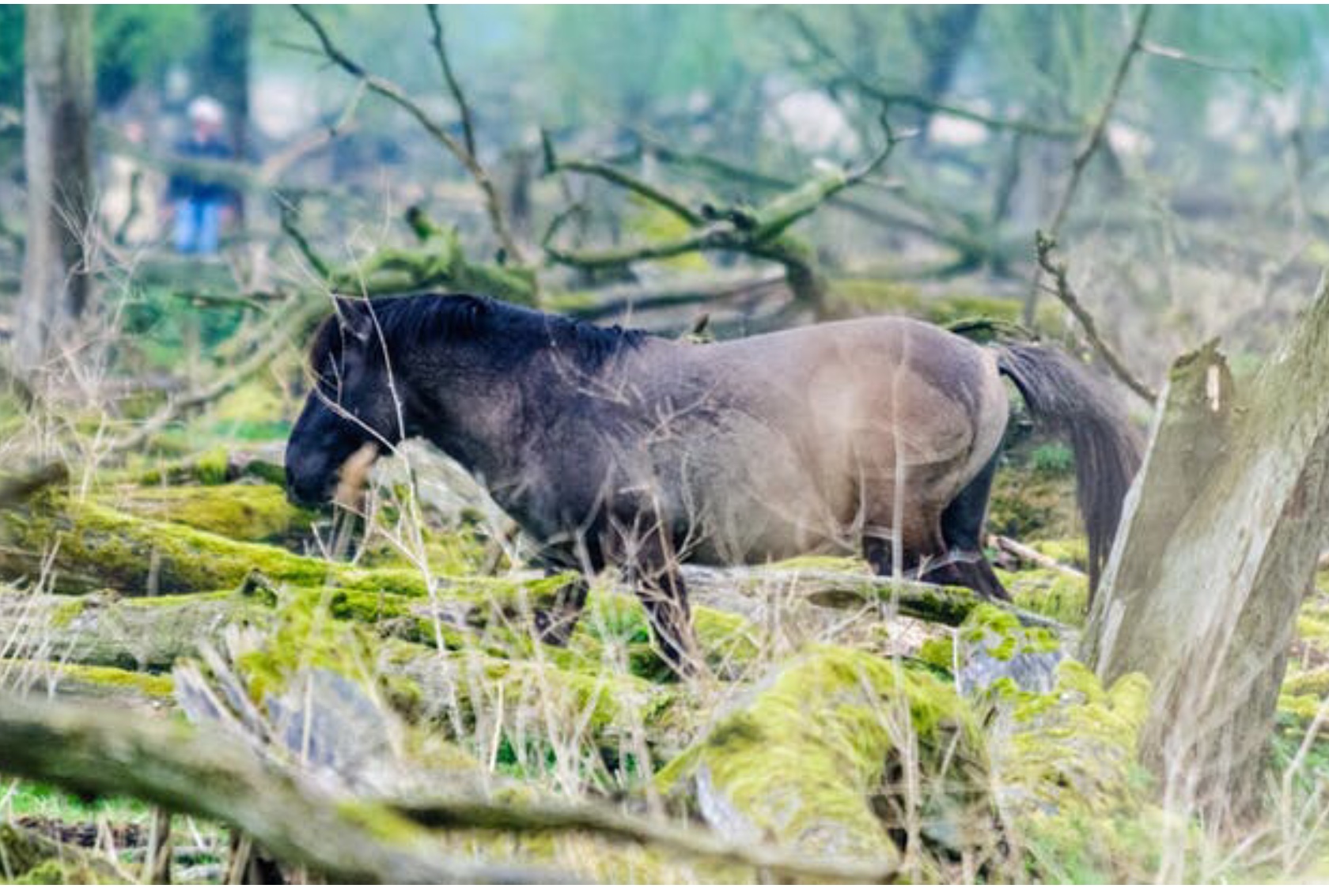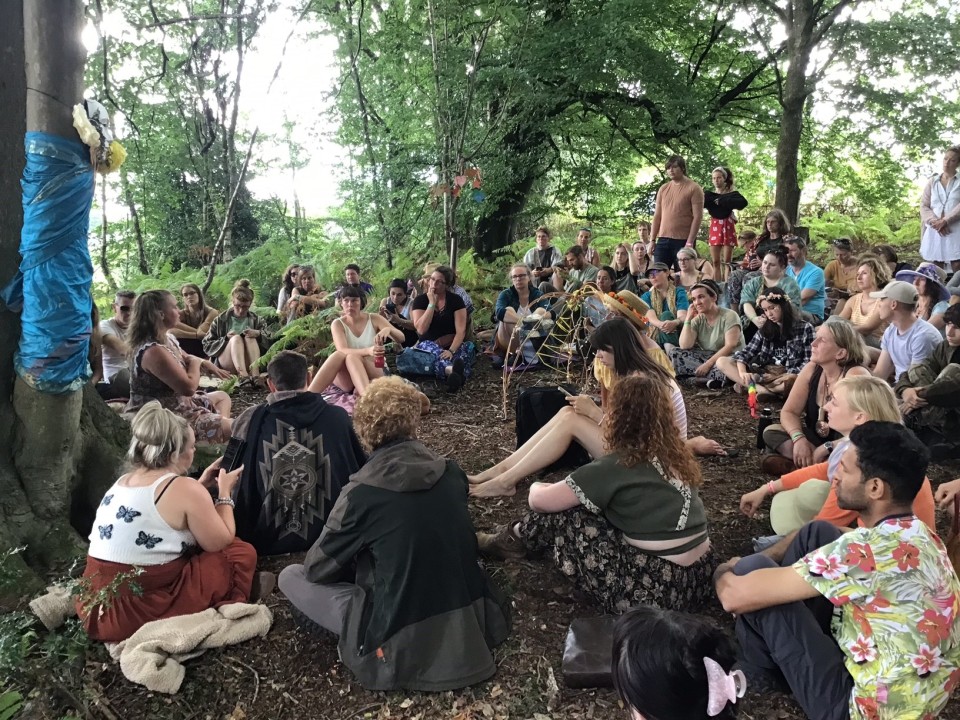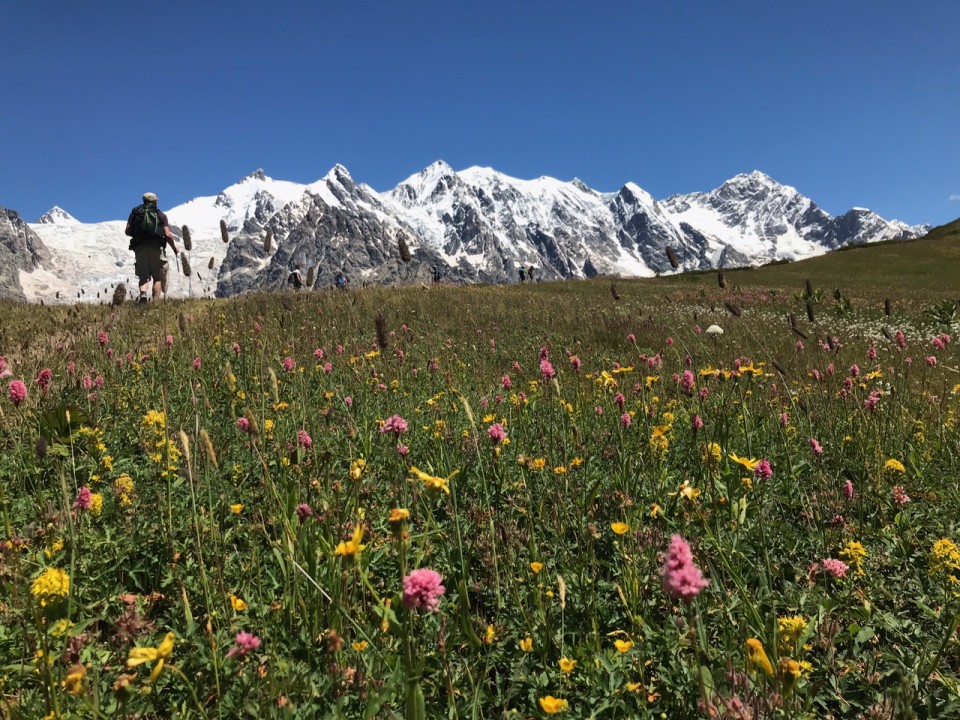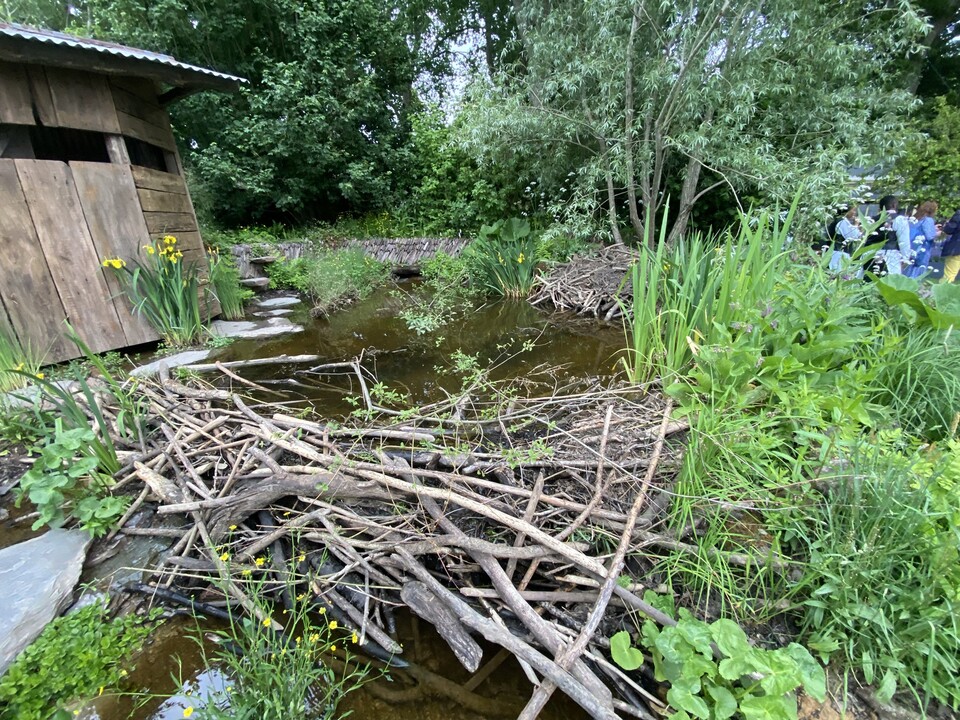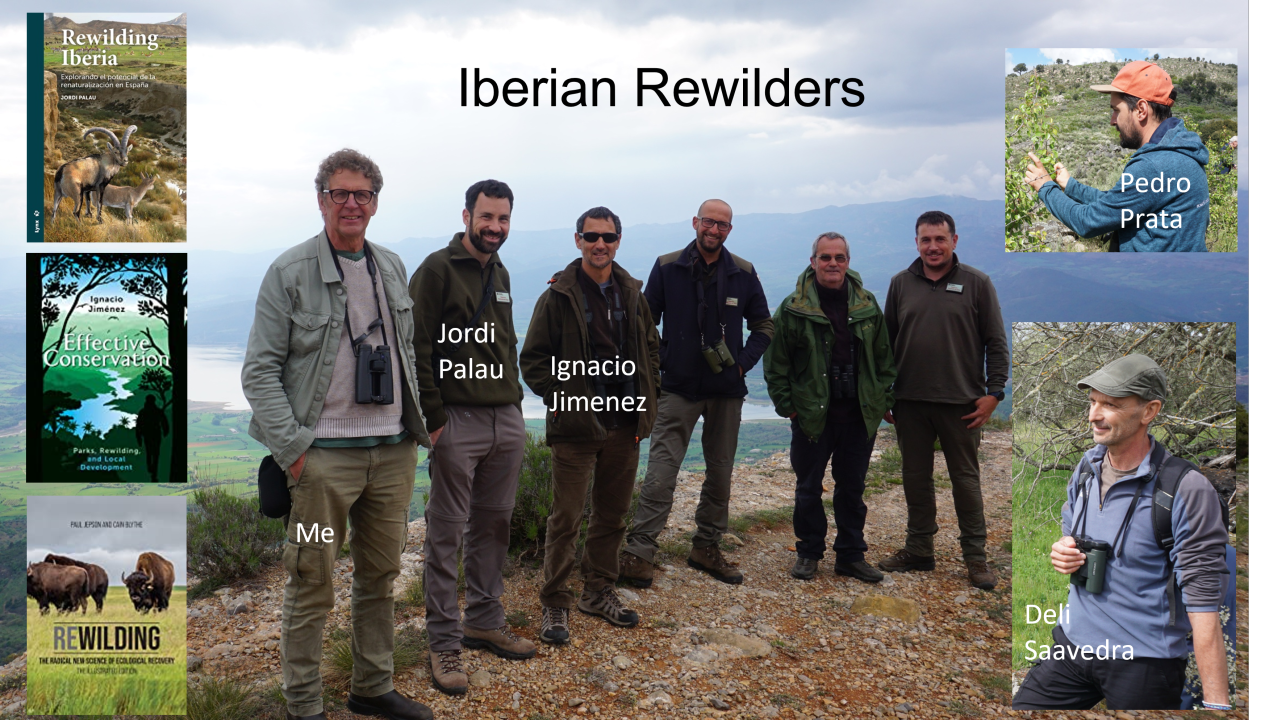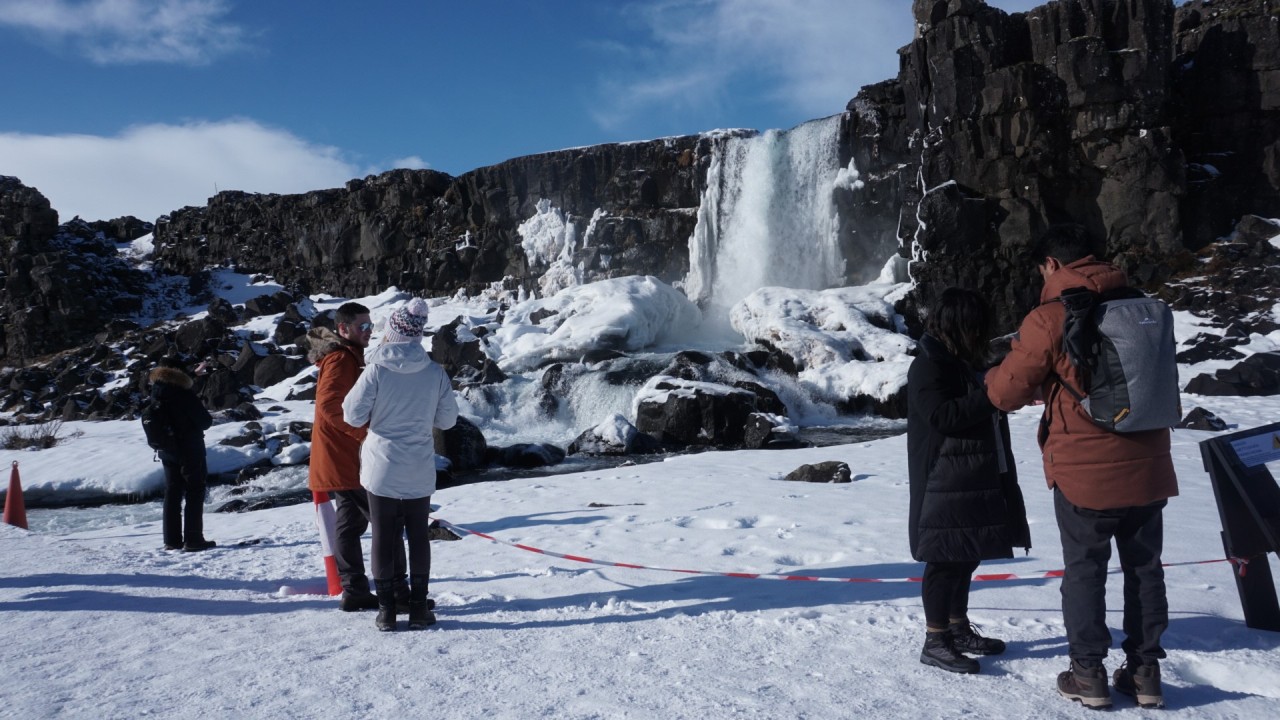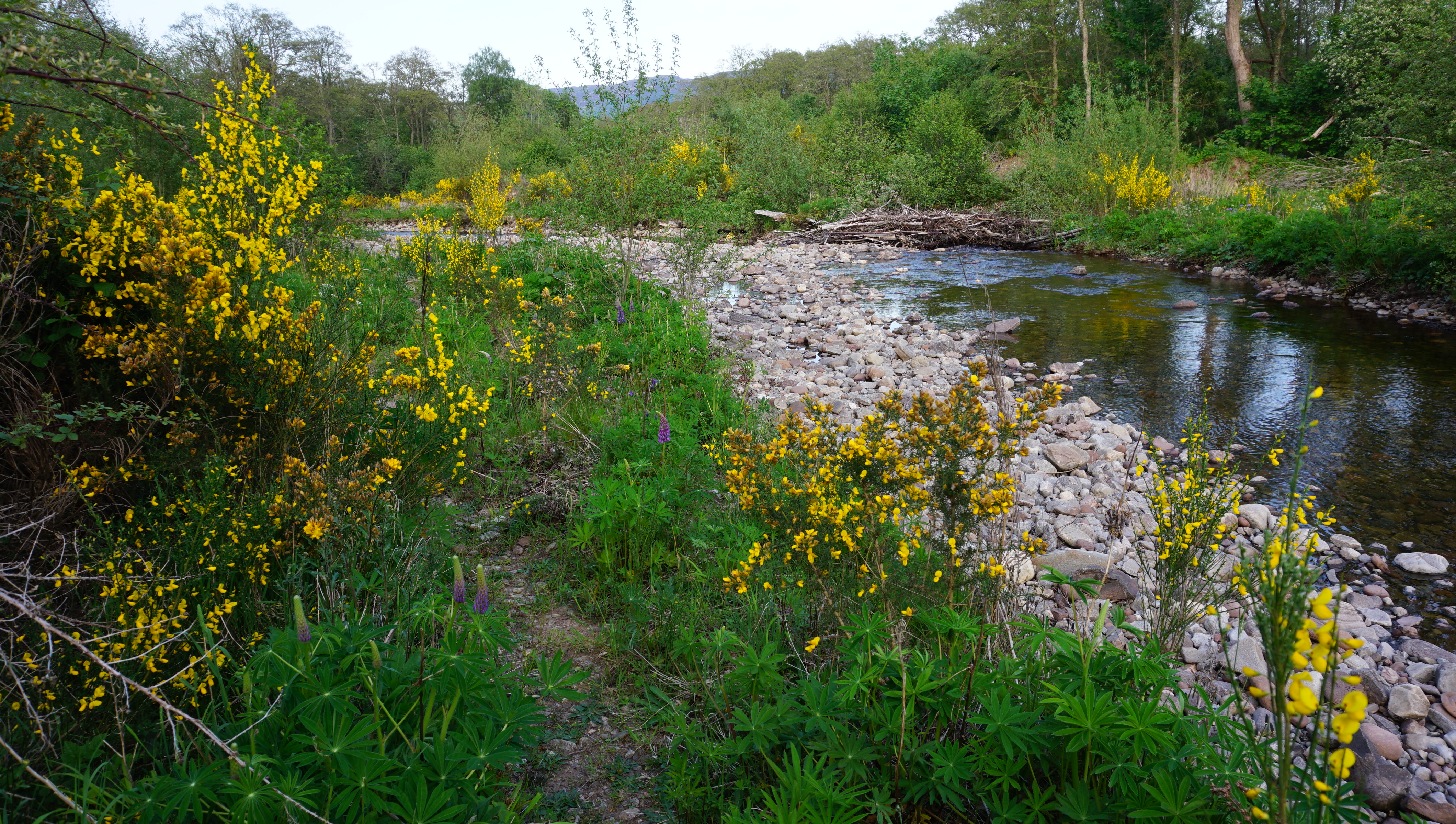This article was originally published in The Conversation on 11 May 2018. Header image via shutterstock
In the late 1960s a patch of land to the east of Amsterdam was reclaimed from the sea for industry. Following the 1973 oil crisis this plan was abandoned and flocks of geese moved in. As the geese grazed the land they created changing mosaics of vegetation and a rich and unique environment spontaneously developed.
Dutch ecologists saw this and were inspired by the potential for animal grazing to restore a thriving “self-willed” ecosystem. They proposed a unique experiment to recreate the mix of large herbivores that inhabited the region after the last ice age, around 8,000 years ago, and to let natural forces, rather than human management, decide what environment they would create. The Oostvaardersplassen nature reserve, or OVP, was established on the site in 1986. Founder herds of konick horses, heck cattle and deer were introduced and the reserve became an iconic example of “rewilding”.
Recently, however, this 55 square kilometre reserve became front-page news in the Netherlands after images of starving animals spread outrage across social media. Plans to cull 3,000 weakened animals led to protests and prompted activists to throw bales of hay over the fence. Rangers and ecologists associated with the project have even faced death threats.
Yet hungry animals at winter’s end is a natural situation. Allowing nature to take its course means that animal numbers will fluctuate, and following a series of mild winters the reserves’s populations of konik horses, heck cattle and deer were unusually high. In a hard winter, like the most recent, the grass stops growing and many animals will starve and die.
Nonetheless, some have suggested the experiment has failed, and that OVP simply creates animal suffering. But the starving animals and public outcry is a failure of politics rather than a failure of rewilding itself.
All rewilding projects operate on the principle that herbivore populations should fluctuate as nature intended. This is important because it leads to varied vegetation with lots of different species. As a “first generation” rewilding experiment, the OVP left its animals to fend entirely for themselves.
Elsewhere in the Netherlands, ecologists quickly modified the concept into something more inclusive and entrepreneurial that takes animal welfare into account. This is why second generation rewilding projects, such as those at Gelderse Poort, the Border Meuse and Kempen Broek are less controversial and hence less well known.
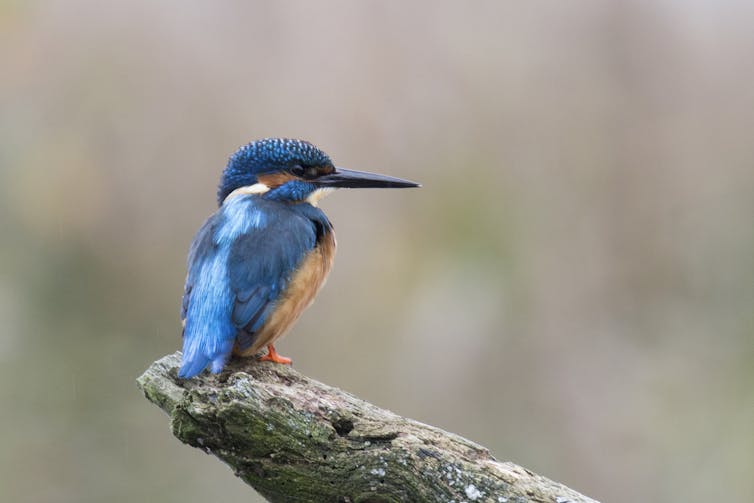
Jac. Janssen / flickr, CC BY-SA
These reserves are developing the category of “kept wild”, where herds behave like wild animals and perform the same ecological role, but are also managed by humans to some degree. In these projects, the condition of each animal is assessed at the end of each winter. Those that would suffer and die from starvation or predation if left to nature are fed until they regain their condition in the spring. At this point they are removed to new rewilded areas or harvested and sold as “wild meat”.
This approach has created flourishing rewilding areas where visitors can feel the tingle of unease that comes from being in the proximity of large free-living animals. In the Netherlands there are now dozens of such areas along the coast and rivers.
Social enterprises have emerged to manage the wilded herds on these second generation projects. Some are developing breeds better suited to living in rewilded landscapes and with public access. Traits include a more docile temperament, smaller udders to reduce injury, or larger horns for defence against wolves and feral dogs.
For rewilding purists, there is a trade-off: carcasses are removed, even though they are key to restoring natural scavengers – anything from vultures to carrion beetles – and the ecological processes they encourage. However, contemporary attitudes to processes of death, decay and decomposition are mostly negative. In places with lots of visitors, people find rewilding principles easier to accept if there are no dead animals around.
Renewing the OVP experiment
In April this year, a local government committee advised that the number of large herbivores on the OVP should be “reset” and actively managed at sustainable levels. But, if adopted, the park’s natural cycle of grazing-induced ebbs and flows in different species at different times would be constrained, and the experimental principle lost.
The OVP was previously part of a progressive vision – the OostvaardersWold – to create a natural corridor linking it with the Veluwe, a national park to the south. This would have created the conditions for animals to move with the seasons and for predators such as wolves to establish themselves. Although the Dutch state had acquired most of the land in the corridor, the policy was abandoned in 2010 following a change of government and a new minister who thought it a waste to convert good agricultural land to nature.
The corridor idea should be reignited. Politicians are wary of trying things again, but ideas are emerging to present a new strategy that integrates “kept wild” approaches. This is important because in the longer term even an expanded system may not avert population booms and the starvation events that follow. Studies from Africa show that it is the availability of food, not the presence of predators, that limit populations of larger herbivores (which are too big for Europe’s lynx and foxes to tackle anyway).
Opening up the corridor even in a limited way would enable hungry animals to leave the OVP. They would migrate in social groups and decisions could be made on what to do with each group – a sort of “tap” in the system. The main expense would be building an ecoduct over the A6, a large motorway that runs north from Amsterdam around the edge of the park. The land for the corridor is already bought and the Netherlands has plans to build another 20 ecoducts.
Society and rewilding have both moved on since the Oostvaardersplassen was created, but the OVP “experiment” has not been able to do so. It’s time to change this – after all, rewilding should be about the future, not the past.
Paul Jepson, Course Director, MSc Biodiversity, Conservation and Management, University of Oxford
This article was originally published on The Conversation. Read the original article.

